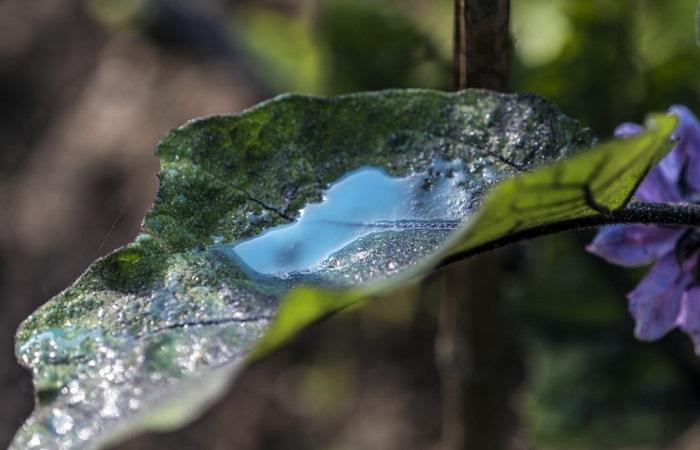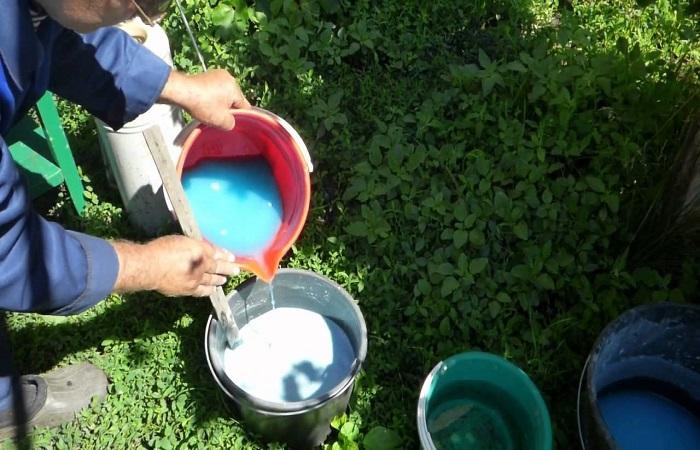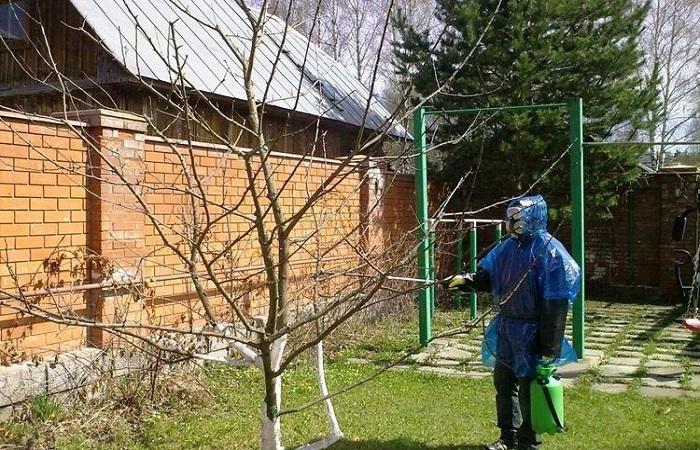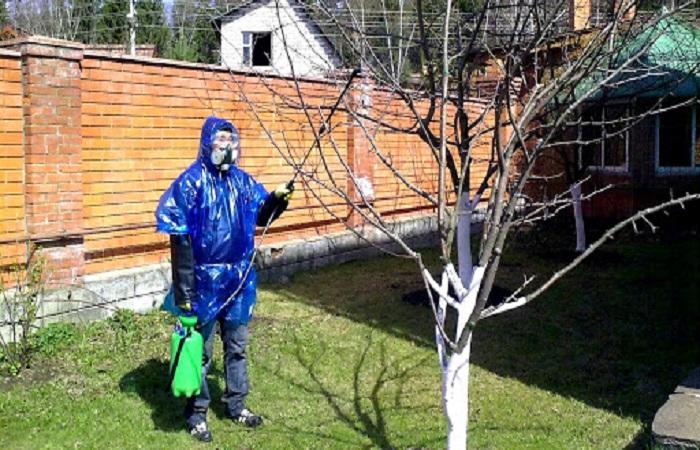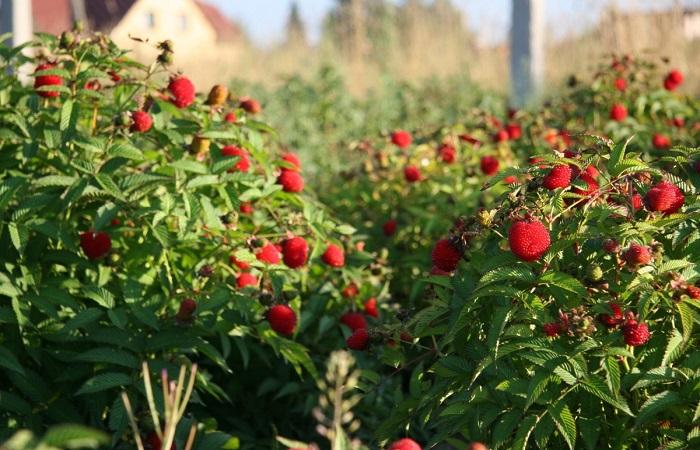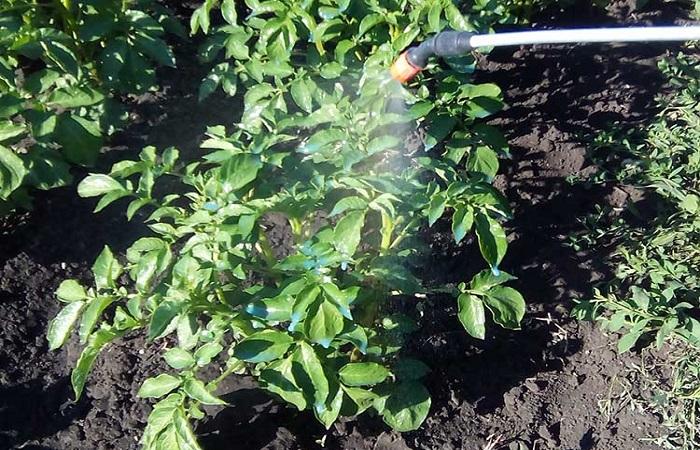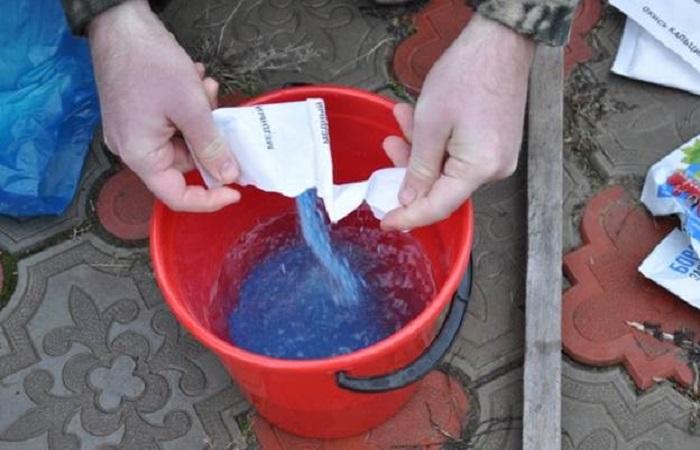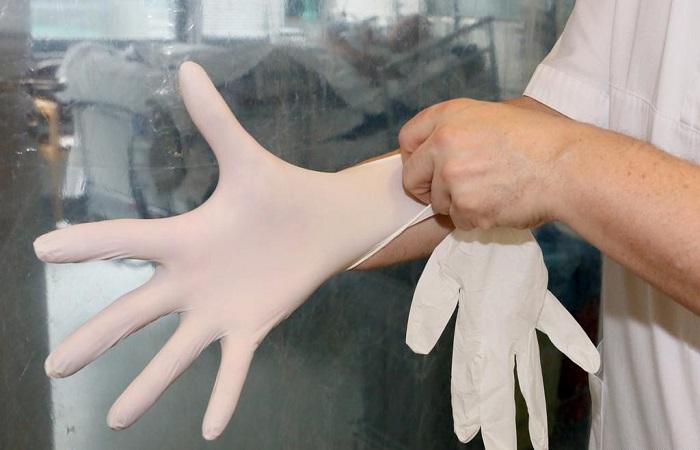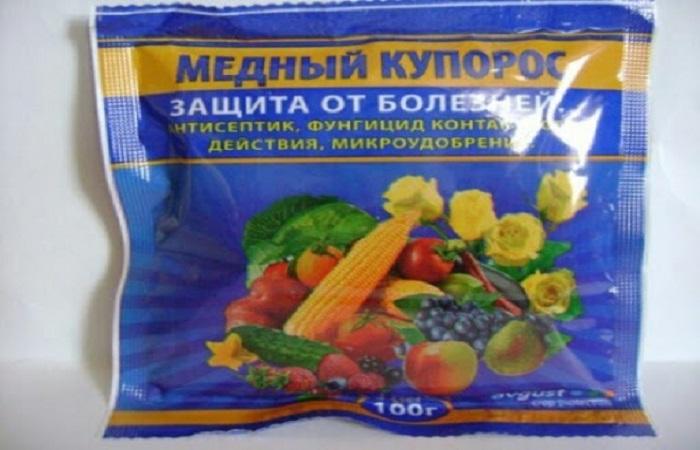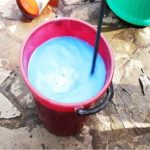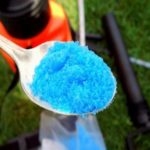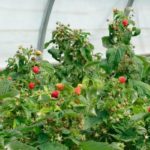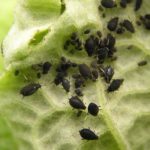It is not necessary to purchase complex fungicidal preparations for treating cultivated plants; products that have been used for a long time can also be effective. Let's consider the use of Bordeaux mixture in a vegetable garden, a private garden, how to prepare a fungicide, when and how to spray crops with it (vegetables, fruits, berries, grapes, strawberries), what preparations can be replaced.
- What is Bordeaux mixture and how does it work?
- Area of application of the product and its composition
- Cooking rules
- Work time
- in autumn
- in spring
- Instructions for use of the solution
- For pears, apples and quinces
- Grape
- Gooseberries and currants
- Strawberry and raspberry
- Tomato
- Cucumbers, watermelons and melons
- Potato
- Decorative shrubs and flowers
- Onion
- Beet
- Precautionary measures
- What can be replaced
- Which is better: copper sulfate or Bordeaux mixture
What is Bordeaux mixture and how does it work?
The drug consists of 2 components - copper sulfate and calcium hydroxide (in amounts of 960 and 900 g per kg), the product has the formula CuSO4 • 3Cu(OH)2. You can prepare the liquid yourself or buy it ready-made in a bottle. Acts as a protective fungicide, bactericide and ovicide, has a contact effect.
Bordeaux mixture is a unique fungicide. It can be used against fungi on various crops - vegetables, berry bushes, flowers, ornamental shrubs, melons and citrus fruits.
The action of the fungicide is based on the effect of copper on fungi. With preventive and therapeutic effects, copper disrupts the normal course of processes in cells, as a result of which fungi die. The fungicide begins to act 2 hours after it appears on the surface of the plant; the protective effect on crops lasts for 7-12 days.
Area of application of the product and its composition
In gardening, crops are treated by spraying. The liquid is used mainly for treating gardens and vineyards in early spring and autumn and throughout the season; vegetable crops are also processed in season.
The product is used to treat trees and shrubs against a number of fungal diseases: fruit rot, scab, clasterosporiosis, rust, spotting, moniliosis, curl, coccomycosis, anthracnose, septoria; grapes are sprayed against oidium and mildew.
Bordeaux mixture is used on garden crops against late blight, peronosporosis, macrosporiosis, anthracnose, hernaria, cercospora, and rust. It has a gentler effect on plant tissue compared to synthetic products and does not leave burns.The liquid can also be sprayed on flowers grown indoors, as well as treated inside greenhouses, preparing the space for the growing season.
Cooking rules
It is easy to prepare Bordeaux mixture yourself from copper sulfate and fresh lime. Two types of solution are made: 1% and 3%; to prepare them you need to take 100 g of vitriol and lime or 300 g of both substances. Dilute them in 5 liters of water separately, and then mix them in a bucket, you get 10 liters in total. Mix the two solutions in this order: vitriol into the lime mortar, and not vice versa. If you do the opposite, when you pour lime, that is, an alkali into an acidic environment, the reaction can be violent, and there is a high probability of burns. Pour in the liquid slowly and carefully, stirring constantly.
Correct preparation is checked with litmus paper: it should not turn red. If it turns red, the solution has an acidic reaction, which can be reduced by adding lime water.
You can take a simpler route: buy ready-made liquid in a bottle. It is produced by the company “August” in 100 ml bottles. This is a concentrate, it is diluted in 10 liters in an amount of 100-250 ml. The drug is stored for 2 years. The prepared liquid cannot be stored; it must be used immediately.
Work time
Bordeaux mixture is used in spring and autumn as a prophylactic agent, and also during the season as a therapeutic agent.
in autumn
Trees and shrubs are sprayed after the leaves have fallen; in this case, trunks and all branches are subject to treatment.Since you need to make a concentrated solution, which can burn the leaves, you need to choose the time in the middle or towards the end of autumn.
in spring
Spraying of stone fruit trees that are sensitive to copper should be done exclusively in spring or autumn and should not be sprayed in summer. Other fruit and berry bushes can be treated in the summer, but the last spraying should be done no later than 2-3 weeks before harvesting the fruits.
In spring you can spray before buds open and leaves appear. A weak solution can be treated before flowering, if necessary.
Instructions for use of the solution
Spraying of shrubs, vegetables, trees is done in such a way as to wet all the leaves on both sides, all branches, trunks and stems. It is convenient to use a spray bottle. On average, 2-10 liters are consumed per tree, per shrub and per 1 square meter. m of vegetable beds - 1.5-2 liters.
Spraying in spring and autumn is done at temperatures above 5 °C. It is advisable to work early in the morning or in the evening, on a day when there is no sun, wind or rain. The final spraying against fungi should be carried out no later than 2 weeks before harvesting.
For pears, apples and quinces
It is used on young and mature fruit-bearing trees. In spring and autumn, use a 3% solution, before flowering - 1%. The interval between sprayings is 1-1.5 weeks, the last one is carried out 2 weeks before harvesting in the garden.
Grape
Bordeaux mixture helps against mildew and an equally dangerous disease - oidium. As with trees, the vine is sprayed in spring or autumn, before the leaves appear or after they fall. If necessary, it can be treated in the summer, with a pause of 1-.5-2 weeks, the last spraying should be done 15 days before the grape harvest.
Gooseberries and currants
In spring, for bushes, use the drug with a concentration of 3%, in the period before flowering - 1%. Take a break between treatments of 1.5-2 weeks. In mid-summer, when the berries are collected, one more treatment should be carried out - with a 3% solution.
Strawberry and raspberry
For these crops in the spring, a solution of strong concentration is used with a consumption of 1.5 liters per 10 square meters. m. After harvesting the berries, spraying is done, but with 1% liquid.
Tomato
A highly concentrated solution is not suitable for all vegetables. Apply 1%. They consume 1-1.5 liters per 10 square meters. m. The maximum number of treatments is 4 per season.
Cucumbers, watermelons and melons
For cucumbers, the consumption of the drug is 1.5-2 liters per 10 square meters. m., spraying frequency – no more than 3 per season. Consumption for melons and watermelons is 1 liter for the same area.
Potato
For potatoes, the product consumption is 1-1.5 liters per 10 square meters. m. The maximum number of sprayings is 4 per season.
Decorative shrubs and flowers
In spring and autumn, shrubs can be sprayed with a 3% solution, in summer - with a 1% solution in a volume of 1-2 liters per plant. For flowers, use only a weak solution.
Onion
Onions on turnips are sprayed with 1% liquid up to 3 times per season. Green onions cannot be treated with this product.
Beet
The number of sprayings is no more than 3 times per season, with a consumption of 1 liter per 10 square meters. m. Concentration – 1%.
Precautionary measures
Due to the rather pronounced toxicity of the product (class 2 for humans and class 3 for bees), you should work with the liquid in thick clothing, wear gloves on your hands, and a mask and goggles on your face. Drinking, eating anything, and smoking are prohibited. After finishing spraying, wash your hands and face with soap. If drops get on the skin or mucous membranes, rinse them with running water.
It is prohibited to combine Bordeaux mixture in the same solution with FOS and agents that decompose in an alkaline environment. The industrially produced drug is stored for 2 years, the solution is not stored longer than 1 day. It must be used on the day of preparation. The very next day it loses its properties.
When processing beds and gardens, you need to try to ensure that the liquid does not fall on the ground; copper can accumulate in the soil and negatively affect the plants in the future.
What can be replaced
Replace Bordeaux mixture with fungicides containing copper. In the household you can use the drugs “Oxychom”, “Hom”, “Kuproksat”, “Idol”. They have a similar effect and effectiveness, and a fairly long shelf life.
Which is better: copper sulfate or Bordeaux mixture
Both drugs contain copper as the main active ingredient. The action and purpose of vitriol and liquid are the same. The differences are that Bordeaux mixture is not as toxic to plants due to the neutralizing effect of lime. It is more resistant to being washed away by precipitation and adheres better to the leaves.
The advantages of a solution of pure vitriol include the fact that it can be diluted and stored in a hermetically sealed container all season; this will not work with liquid. It can also be used to disinfect cellars, wooden surfaces, basements, and warehouses against mold.
Bordeaux mixture is a time-tested and effective drug. It will help protect plants from fungal infections throughout the season.Agrochemical enterprises produce the product ready-made, in bottles, so it is not necessary to prepare it from lime and vitriol. The finished liquid has many advantages: ease of use, accurate dosage, long shelf life. The small volume of packaging allows you to use the product without the need to store leftovers.

